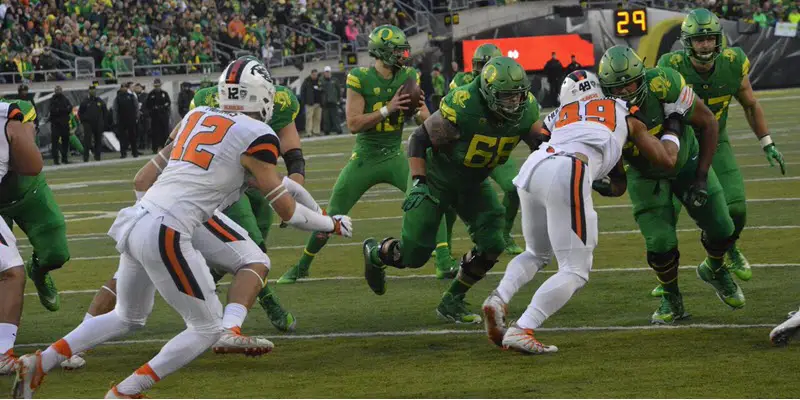The Pin and Pull is something I’ve lightly touched on twice in the past year. Once was in the article about the Oregon’s Buck Sweep play, and the other was in a piece I wrote on the Stretch play that the program started to run at the end of the season. The fact that Coach Mario Cristobal brought the scheme up at a Glazier Clinic in Los Angeles makes me believe this is something we should take a closer look at.
The Pin and Pull is most often used as a change up to a more traditional Outside Zone blocking scheme. It simply disrupts the keys that a defense has been using to sniff out the Outside Zone. The scheme is going to seem a little overwhelming rule-wise at first, but is actually fairly easy to catch on to. Charles Fischer referred to it in Chip Kelly’s Sweep Read play.
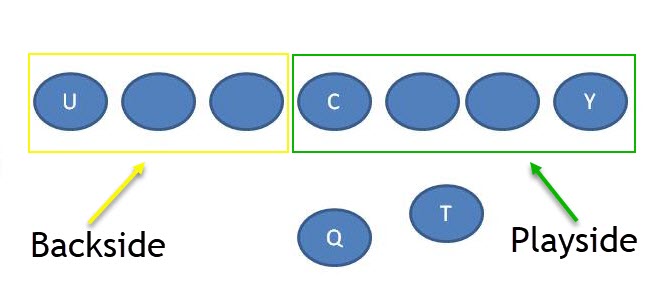
Playside versus Backside
Most Pin and Pull schemes are going to have two sets of rules. One set of rules is going to be for the playside of the offensive line and the other is for the backside (displayed in the diagram above). The playside of the line is the center to tight end on the side the ball is being run to. The backside would obviously be the guard to tight end on the opposite side. Some teams will count the backside Guard as a playside linemen if there is a backside tight end.
Most of the time the backside of the line is going to run the basic Outside Zone style of blocking, while the playside executes the Pin and Pull. Some teams may have the Pin and Pull all the way across the line, but the most commonly taught way is the divided scheme previously mentioned.
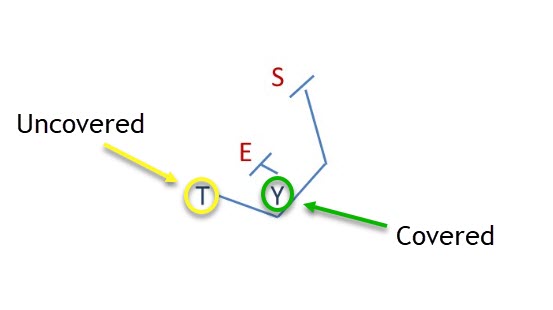
Covered versus Uncovered in the Pin and Pull
The portion of the line that runs the Pin and Pull is going to use a simple covered/uncovered rule. All that means is this: does the offensive lineman (“OL”) have a defender lined up over top of him or in the gap away from the direction of the play? If so, he is “covered.” The OL who is covered will be tasked with pinning that defender inside, essentially down blocking. The next uncovered OL to the inside will pull to the outside. The first puller is tasked with either the kick-out of an overhang defender or sealing a defender to the inside (often called “logging”), while the second puller turns up field and fills the alley.
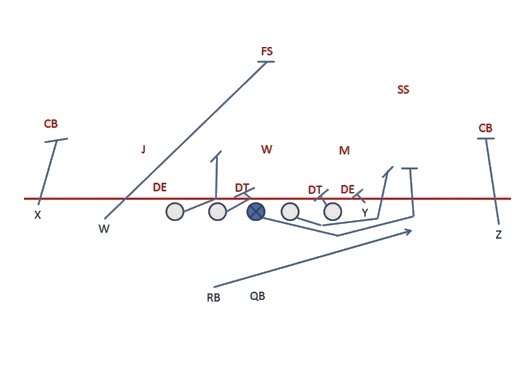
Center and Guard Pull
The diagram above is an example of the Pin and Pull where the playside tackle and tight end are both covered. This prompts them to execute pins, while the uncovered center and playside guard are the pullers. The illustration gives you a really good idea of how the scheme works. From here, you can easily imagine how the play would unfold should any of the other OL be covered.
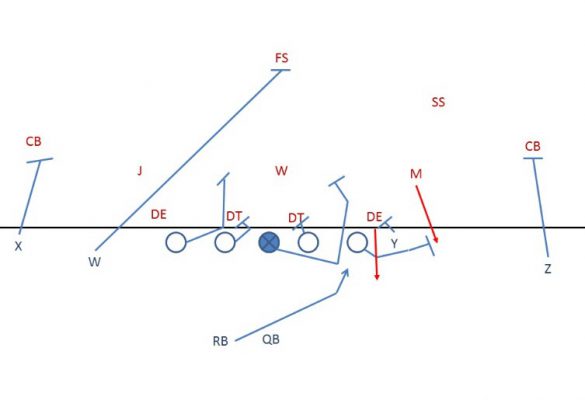
What if a first level defender gets instant penetration?
An interesting tactic I’ve come across since doing more research on this scheme concerns what to do when there is instant penetration by a first level defender. In the diagram above, the playside defensive end gets through right away, causing the center to adjust his path and pull through the B-gap. The RB should also make this read and follow the Center through. This is essentially a “bend” read in the traditional Outside Zone, but it is predicated on both the pulling OL and the RB reading the same thing correctly.
While this is nothing new to Oregon football, as Chip Kelly was a big advocate of this type of scheme, it sure seems like the Pin and Pull will continue under Coach Cristobal. The information above is still a fairly basic breakdown of the Pin and Pull, but it is enough to be an adequate primer for us to understand more about how the Duck run game works.
Coach Eric Boles
Newark, Ohio
Top Photo Credit: Jerry Thompson
Eric resides in Central Ohio, just outside the capital city of Columbus. He is a former offensive assistant and return game coordinator for the Ohio State – Newark/Central Ohio Technical College Titans football program.
He is an OSU-N graduate, having completed a Bachelor of Arts program in psychology.

